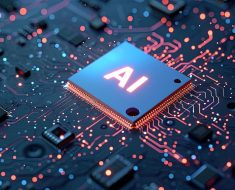At SAP, we view artificial intelligence (AI) not as a standalone technology, but as an integrated part of our business applications that infuses intelligence natively into business processes. The introduction of generative AI (GenAI) marks a disruptive shift that will transform how businesses operate, make decisions, and optimize processes. Contextualizing this technology in a business setting can unlock unprecedented value for our customers.
At SAP TechEd on November 2-3, 2023, we announced the introduction of GenAI Hub, expected to be generally available by end of 2023, and SAP HANA Cloud Vector Engine, which will be available by March 2024.
This blog post is the first of a series that dives deeper into various aspects of SAP’s approach to generative AI and its technical underpinnings.
SAP’s Generative AI Strategy
SAP believes that generative AI is one of the most consequential technologies of our time, and SAP is committed to helping our clients leverage generative AI to create tremendous business value. SAP specializes in Business AI: generative AI that is relevant since it’s embedded in your business applications and processes from day one; that is reliable since we train, ground, and adapt generative AI on your business data and context; and that is responsible by design, following SAP’s rigorous AI ethics, privacy, and security practices.
SAP is releasing generative AI-powered capabilities and features natively into our cloud business software, including Joule, our generative AI copilot that transforms how people interact with their processes and data. New capabilities on SAP Business Technology Platform, like a vector database engine in SAP HANA and SAP Generative AI Hub, allow customers and partners to create generative AI-powered extensions and apps. We foster an ecosystem of strategic partnerships to leverage the best generative AI models available.
We also believe that while AI is a useful tool, humans still play a key role in business decision-making and reasoning. Therefore, we deliberately design our AI solutions following our AI ethics policy and to keep humans in the loop to carefully review AI-generated information.
SAP’s Architecture for Generative AI
With more than 75% of the world’s transaction revenue touching an SAP software system, SAP is uniquely positioned to integrate AI into business processes to create value. Already, over 24,000 SAP cloud customers actively use more than 130 AI scenarios in our applications and SAP BTP.
The recent advancements in AI have opened vast opportunities that go far beyond what has been possible until today. At SAP, we are leveraging our deep business process knowledge to natively embed generative AI across our business application portfolio. Our teams are developing a wide range of use cases from question answering, text generation, classification, and summarization to code generation and are exploring the potential of emerging paradigms such as large language model agents.
Figure 1: GenAI architecture enables fast and compliant productization of use cases with the most common generative AI models while ensuring compliance with enterprise standards.
Each generative AI model yields unique qualities and strengths. To meet customers’ needs for their business, SAP has made a strategic move to provide enterprise-grade access to the most common models through its generative AI Hub as part of AI Core as illustrated in Figure 1. This includes leading cloud vendors as well as SAP-managed third-party models deployed on SAP’s own infrastructure for highest compliance standards. Moreover, the rapid evolution of open-source models has been impressive, and we’re committed to keeping pace with this innovation by making selected open-source models available.
However, even the most capable generative AI models risk ‘hallucinations’ or generate outputs that don’t align with reality. At SAP, we are grounding our use cases in the vast amount of high-quality, real-world business and industry data that is at the core of our enterprise solutions. By leveraging techniques such as prompt engineering, in-context learning, and retrieval augmented generation (RAG), we are augmenting large language models (LLMs) with our customers’ data and generating results that are contextual and relevant to their specific business environment. The Generative AI Hub is orchestrating data flows towards our data platform, a key component to enable our development teams to scale development at low cost and provide a rich data model across business processes.
For this, we are also working on bringing vector database capabilities to SAP HANA Cloud to store embeddings, a form of semantic data representation capable of translating high-dimensional data into a lower-dimensional space. This is particularly useful for making sense of complex and unstructured data, such as text, images, or user behavior, by capturing the essence of the data in a condensed form.
We also provide developers with a playground system and libraries to explore and build on top of these technology components. At SAP, more than 35,000 employees are already using this playground system and have generated over one million prompts.
Moreover, we recognize the importance of trust and transparency in the context of generative AI. Our technology enables us to implement strong authorization, audit and monitoring capabilities. We apply tenant segregation and zero data retention rules including no third-party training on our customers’ data as well as our strict data privacy policy. We understand that AI models have the potential to generate content that may not always align with ethical or quality standards. For this, we are building robust measures such as prompt templates and validation, and content management to filter these outputs so that they align with common standards.
Our approach is not only ensuring enterprise standards, but it is also the technical backbone of SAP’s commercial framework. Rather than imposing a one-size-fits-all solution, we provide our customers the flexibility to consume generative AI capabilities in SAP’s Business Applications that address their specific needs and objectives.
Building on these technical underpinnings, we recently announced Joule as SAP’s Gen-AI powered digital assistant that is embedded across our suite of business applications. The primary aim of Joule is to enhance productivity for our customers’ users by streamlining their daily tasks and decision-making processes. Recognizing the potential of generative AI, we are integrating technical components into Joule to augment conversational capabilities. These include analytics, text editing, document Q&A, and generative capabilities through a federated architecture to enable contextual and relevant user interaction.
We recognize the extensive impact of AI on decision-making, fairness, transparency, privacy, and dignity. It is this recognition that led us, in 2018, to establish a robust ethical framework guiding our AI development and operations. Our ethical principles are anchored in a commitment to human rights, designing for people, striving for bias-free business, transparency, upholding quality and safety, data protection, and engaging with broader societal challenges and regulators.
Conclusion
By integrating generative AI into our business processes, applications, and SAP BTP, we aim to unlock unprecedented value for our customers. Our strategy is centered on ensuring trust, control, and business readiness to harness the full potential of GenAI.
Looking ahead, we are committed to keeping pace with the rapidly evolving landscape and will continue to explore and innovate in this exciting new field of AI. In the coming 6 months, we plan to further enhance our platform and embed Joule in many of our business applications. We are also working on many more generative AI innovations in our business applications from writing assistants generating job descriptions to intelligent process recommendations.
We look forward to sharing more insights as part of this blog series and invite you to join us on this journey exploring the transformative potential of generative AI in business processes. Stay tuned for the next part of this series: we will deep dive into SAP’s generative AI hub.
——-
Co-authored by Dr. Philipp Herzig and Dr. Jan Dumke





